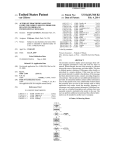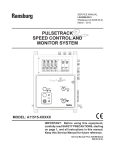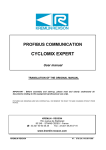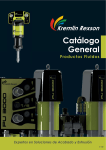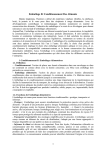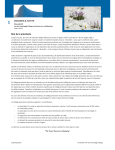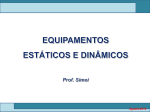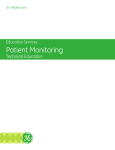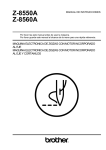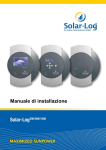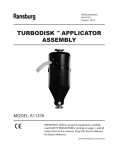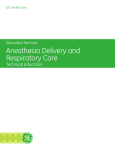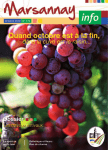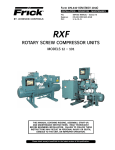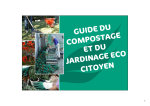Download Electrostatic spray apparatus and method
Transcript
USOO8906467B2 (12) United States Patent (10) Patent No.: Marty et a]. (54) (45) Date of Patent: ELECTROSTATIC SPRAY APPARATUS AND (52) METHOD CPC ............ .. B05D 1/007 (2013.01); B05B 5/1608 (2013.01); B05B 12/14 (2013.01); B053 15/025 (201301); 3053 5/04 (2013-01) Heidi M_ Turner, Minneapolis, MN USPC .......... .. 427/484; 427/483; 118/620; 118/621 (Us). Larry L_ Her?ndal Minneapolis MN (’US)_ Andrea J Edw’ards . ’ . ' (58) Field of Classi?cation Search ’ CPC ...... .. B05B 12/14; B05B 15/025; B05B 5/04; ’ B05B 5/1608; B05D 1/007 Mlnneapohs> MN (Us) USPC ........................................................ .. 427/484 (73) Assignee: Valspar Sourcing, Inc., Minneapolis, MN (Us) Notice: Dec. 9, 2014 US. Cl. (75) Inventors: Brian L. Marty, Minneapolis, MN (US); (*) US 8,906,467 B2 see apphcanon ?le for complete searCh hlswry' (56) References Cited Subject to any disclaimer, the term of this patent is extended or adjusted under 35 U'S' PATENT DOCUMENTS 4,232,055 A 11/1980 Shaffer U.S.C. 154(b) by 0days. 4,785,760 A (21) Appl. No.: 13/811,358 (22) PCT Filed: Jul. 21, 2011 (86) PCT No.: PCT/US2011/044827 11/1988 Tholome (Continued) FOREIGN PATENT DOCUMENTS JP W0 57-24672 2/1982 WO 2006113201 A2 * 10/2006 OTHER PUBLICATIONS § 371 (0X1), (2), (4) Date: Jan. 21, 2013 (87) PCT Pub. No.. WO2012/012621 PCT PUb- D8161 Jall- 26, 2012 (65) Prior Publication Data Us 2013/0122212 A1 May 16, 2013 Kremlin Rexson & Sames, “CYCLOMIXTM Multi” Data Sheets, 2 pages (downloaded from the Internet Jun. 21, 2011). (Continued) Primary Examiner * Dah-Wei DYuan Assistant Examiner * Kristen A Dagenais (74) Attorney, Agent, or Firm 4 IPLM Group, P.A. (57) ABSTRACT Target substrates are electrostatically coated by ?owing an electrically isolated wet coating composition containing Related US Application Data waterborne coalescable polymeric binder into an electrostatic coating apparatus (100), depositing the coating composition (60) PFOViSiOIlal application N0~ 61/366,277, ?led 011 111121, 2010. onto a rotating electrostatically-charged atomizer (104) and then onto the target substrate, ?owing an electrically isolated aqueous cleaning liquid into the apparatus before deposition of the coating composition onto the rotating atomizer is halted or interrupted, and depositing the aqueous cleaning (51) Int. Cl. 3053 5/04 (200601) 305C 5/02 (200601) liquid onto the atomizer before or within a suf?ciently short 305D 1/00 (200601) time after a halt or interruption in coating composition depo 3053 5/16 3053 12/14 (200601) (200601) sition onto the atomizer so that a coalesced polymeric binder ?lm does not accumulate on the atomizer. B05B 15/02 (2006.01) 20 Claims, 4 Drawing Sheets CA OS US 8,906,467 B2 Page 2 (56) 4,881,563 4,932,589 5,288,029 5,288,525 5,378,505 5,549,755 5,701,922 5,753,315 5,759,277 5,787,928 5,851,292 5,944,045 5,993,913 6,341,734 6,422,491 6,896,010 7,056,387 2006/0241230 2009/0108109 2012/0006916 References Cited OTHER PUBLICATIONS U.S. PATENT DOCUMENTS ITW Ransburg Electrostatic Systems, “Aerobell 33TM Rotary Atom izer” Service Manual, 60 pages (Mar. 2005). ITW Ransburg Electrostatic Systems, “Aerobell 33RTM Rotary Atomizer” Service Instruction, 52 pages (2004). ITW Ransburg, “AerobellTM” Service Manual, 92 pages (Oct. 2008). ITW Ransburg Electrostatic Systems, “AquaBlockTM Electrostatic 11/1989 6/1990 2/1994 2/1994 1/1995 8/1996 12/1997 5/1998 6/1998 8/1998 12/1998 8/1999 11/1999 1/2002 7/2002 5/2005 6/2006 10/2006 4/2009 1/2012 Christian ................ .. 134/166 C Diana Ishibashi et al. Diana ......................... .. 427/475 Kubota et al. Milovich et al. Knipe et al. ............. .. 134/100.1 Minoura et al. Milovich et al. Allen et al. Minoura et al. Allen et al. ................. .. 137/240 R0 senberger et al. Van Der Steur BilZ et al. Cebola et al. van der Steur Waterborne Finishing System” Brochure, 2 pages (2004). ITW Ransburg, “Evolver 303TM Dual Purge, Solventborne Robotic Atomizers” Service Manual, 86 pages (Oct. 2008). ITW Ransburg, “MMA-303 Direct/Indirect Charge Robot and Machine Mounted Rotary Atomizer” Service Manual, 126 pages (Mar. 2010). ITW Ransburg Electrostatic Systems, “Turbodisk 2 Assembly” Ser vice Manual, Models: 78715, 82 pages (Jan. 2003). ITW Ransburg, TurbodiskTM Applicator Assembly Service Manual, Model: A11376, 78 pages (Nov. 2007). PorZio et al. ................ .. 524/425 Mori et al. .. . 239/694 Nolte et al. ................. .. 239/690 * cited by examiner US. Patent Dec. 9, 2014 Sheet 1 0f4 US 8,906,467 B2 176 174 106 102 108 104 US. Patent Dec. 9, 2014 Sheet 2 0f4 /200 208 207 205 204 Fig. 2 US 8,906,467 B2 US. Patent Dec. 9, 2014 Sheet 3 0f4 US 8,906,467 B2 400 422 US. Patent Dec. 9, 2014 Sheet 4 0f4 US 8,906,467 B2 Fig. 5 CA 10 N 08 L IA P \ BC! E TIME ——> Fig. 6 ll /J G K US 8,906,467 B2 1 2 ELECTROSTATIC SPRAY APPARATUS AND METHOD Rotary electrostatic atomizer manufacturers warn against using excessive amounts of such solvents, as the solvent may penetrate past the seals typically used to protect the air bear ings and air turbines used in typical rotary electrostatic atom izers and may damage or contaminate these delicate parts. CROSS REFERENCE TO RELATED APPLICATION This application is a national stage ?ling under 35 U.S.C. §371 of International Application No. PCT/US2011/044827 ?led Jul. 21, 2011, which claims priority under 35 U.S.C. §119 to US. Provisional Application No. 61/366,277 ?led Jul. 21, 2010, the disclosures of both of which are incorpo rated herein by reference. SUMMARY OF THE INVENTION When used with waterborne polymeric binders, rotary 10 FIELD electrostatic atomizers can easily become clogged or other wise fouled if a coalesced polymeric ?lm forms on the atom izer. This can be a particularly severe problem if an attempt is made to apply a latex paint or other emulsion polymer coating system, or a multiple-component (e.g., two-component) coat ing system employing a reactive, crosslinkable or polymer izable binder. Under the high speed, high turbulence condi This invention relates to the application of waterborne coatings. tions present at the surface of the spinning disk or bell in a BACKGROUND 20 or bell can cause emulsion polymer already on the disk or bell In an effort to reduce solvent emissions including green to dry nearly instantaneously and form a very di?icult to house gases, many industrial coating processes now employ waterborne paints and other waterborne coating systems con taining greatly reduced amounts of Hazardous Air Pollutant (HAP) solvents and other Volatile Organic Compounds (VOCs). These coating systems are sometimes applied using remove hardened ?lm. The ?lm may form a mere fraction of a second after the emulsion polymer ?ow ceases. Film 25 material onto an electro statically-charged rotating (viz., spin ning) disk or bell, and slings droplets of the thus-charged 30 The assignee of the present invention recently developed a two-part aqueous coating system whose ?rst part comprises a waterborne active hydrogen-functional latex binder and whose second part comprises a water-dispersible polyisocy anate, wherein one or both of the ?rst and second parts com prise non-infrared-ab sorptive colored pigment, and wherein a electrical isolation between the electrostatically-charged rotary atomizer and the coating system material supply. Elec trical isolation may be provided or aided by routing the coat ing system material through a transfer block having a piston and a pair of electrically isolated supply cylinders, or by removal may require disassembly of the rotary atomizer and tedious manual cleaning of the disk or bell. a rotary electrostatic atomizer which ?ows the coating system coating material toward a grounded conductive substrate. A frequent concern in such systems is the need to maintain typical rotary electrostatic atomizer, an even momentary interruption in the ?ow of an emulsion polymer onto the disk mixture of the ?rst and second parts coated atop a vinyl substrate will cure to form a vinyl-adherent, infrared-re?ec routing the material through a pair of electrically isolated tive colored protective ?lm. Further details regarding this coating system may be found in US. Provisional Application No. 61/360,804 ?led Jul. 1, 2010, the disclosure ofwhich is reservoirs. In operation, metered amounts of the coating sys incorporated herein by reference. This coating system forms tem material are alternately supplied to the atomizer from a transfer block supply cylinder or from a reservoir while the 35 40 other supply cylinder or reservoir is being re?lled. Many industrial coating processes require frequent mate rial changes, for example to change colors in otherwise simi lar coating materials, or to change coating materials such as changing from a primer to a topcoat. To carry out such mate 45 rial changes in electrostatic coating equipment, the transfer block or reservoirs in the coating equipment may be ?ushed with water or an organic solvent and dried with compressed air. The ?ushing step removes unused coating material from the transfer block or reservoir, and the drying step establishes a “voltage block” that discourages loss of electrical charge into the water or solvent supply line. Cleaning lines are sometimes also connected directly to a rotary electrostatic atomizer. The rotary atomizer manufac turer may recommend that a nonpolar, non?ammable solvent 50 lattices. High VOC levels help wash away or redisperse par tially-coalesced latex ?lms when additional latex coating composition is applied to a partially-dried coated substrate. When attempts were made to apply the two-part coating system onto substrates using commercially available rotary electrostatic atomizers, signi?cant amounts of dried coating ?lm accumulated on the rotary atomizers during use. An even thicker dried ?lm was formed if the atomizers were halted to carry out adjustments, to load new substrate parts for coating, or to undertake a color or material change. The resulting coating material buildup adversely impacted atomizer spray 55 patterns, and sometimes caused the accidental deposit of small hardened coating material chunks onto substrate parts during coating. Suppliers of the rotary electrostatic atomizer (e. g., amyl acetate, methyl amyl acetate, mineral spirits, high ?ash naphtha, toluene or xylene) be used for cleaning, and that conductive solvents (e. g., acetone, diacetone, butyl alco hol, Butyl Cellosolve, methanol or monoethyl ether of dieth ylene glycol) not be employed. The atomizer manufacturer may also recommend that if a polar solvent is employed for cleaning, that doing so be followed by cleaning with a non equipment were unable to solve these problems, and cleaning the fouled disks and bells was very dif?cult owing to the tenacious bond formed by the cured two-part latex ?lm. Applicants addressed the above-mentioned problems by modifying commercially available rotary electrostatic atom izer equipment. Their invention provides, in one aspect, a method for electrostatically coating a target substrate, which polar solvent to remove conductive residue on the atomizer’ s surface. The organic solvents used to clean rotary electrostatic atomizers may pose environmental or other hazards, may represent a waste disposal problem, and often are expensive. an even more durable dried coating than the coatings formed by conventional one-part lattices and thus is even harder to remove. The two-part coating system also has a reduced VOC level compared to many conventional one-part waterborne 65 method comprises: a) ?owing an electrically isolated wet coating composition comprising a waterborne coalescable polymeric binder through a ?rst ?uid conduit in controlled ?uid commu US 8,906,467 B2 4 3 nication with and into an electrostatic coating apparatus FIG. 4 is a side view of a color changer and mixing block comprising an electrostatically-charged rotating atom system for supplying a two-part coating composition to an apparatus of the invention; izer; b) depositing suf?cient coating composition onto the rotat ing atomizer so that electrostatically-charged coating composition droplets are slung onto the target substrate FIG. 5 is a perspective view of a static mixer and mix tube for use in the FIG. 4 system; and FIG. 6 is a timing diagram for use in the invention. Like reference symbols in the various ?gures of the draw ing indicate like elements. The elements in the drawing are and form a coating thereon; c) ?owing an electrically isolated aqueous cleaning liquid through a second ?uid conduit in controlled ?uid com not to scale. munication with and into the apparatus before deposi tion of the coating composition onto the rotating atom DETAILED DESCRIPTION izer is halted or interrupted; and before or within a su?iciently short time after a halt or The recitation of a numerical range using endpoints includes all numbers subsumed within that range (e.g., l to 5 interruption in coating composition deposition onto the includes 1, 1.5, 2, 2.75, 3, 3.80, 4, 5, etc.). atomizer so that a coalesced polymeric binder ?lm does The terms “a,” “an,” “the,” “at least one,” and “one or more” are used interchangeably. Thus, for example, an apparatus d) depositing the aqueous cleaning liquid onto the atomizer not accumulate on the atomizer. The invention provides, in another aspect, an electrostatic coating apparatus comprising a rotatable, electrostatically 20 chargeable atomizer and a ?uid ?ow control unit, wherein: a) the apparatus is in ?uid communication with a ?rst ?uid conduit that controllably supplies the apparatus with an that contains “a” control unit means that the apparatus includes “one or more” control units. The term “accumulate” when used with respect to a ?lm at least partially covering a rotary atomizer surface means to increase in thickness or extent of coverage during atomizer operation or when atomizer operation is halted or interrupted. electrically isolated wet coating composition compris ?uid communication with a second ?uid conduit that The term “coalesced” when used with respect to a ?lm at least partially covering a surface means to form a solid, sub controllably supplies the apparatus with electrically iso lated aqueous cleaning liquid; and away using at least one ?rmly-applied swipe of water-damp ing a waterborne coalescable polymeric binder and in b) the ?uid ?ow control unit is operatively coupled and con?gured to: 25 stantially continuous deposit that cannot be manually wiped 30 i) controllably deposit the wet coating composition onto ened cheesecloth. The terms “controlled” and “controllably” when used with respect to the supply, deposition or ?ow of a liquid from, to, the atomizer while the atomizer rotates and is electro into, through or onto a supply tank, conduit, valve, apparatus statically charged, or other liquid-handling element mean to effect initiation, ii) controllably ?ow the electrically isolated aqueous cleaning liquid through a second ?uid conduit and into the apparatus before deposition of the coating cessation, increase or decrease in the volume of liquid 35 handled by such element. 40 a component or material in an electrostatic coating apparatus means that the presence of the component or material in the apparatus does not reduce electrostatic charge on the electro static atomizer in such apparatus, or that the observable The term “electrically isolated” when used with respect to composition onto the atomizer is halted or inter rupted, and is further operatively coupled and con?g ured to controllably deposit the aqueous cleaning liq uid onto the atomizer before or within a suf?ciently short time after a halt or interruption in coating com position deposition onto the atomizer so that a coa lesced polymeric binder ?lm does not accumulate on charge reduction is su?iciently small that target substrates may still be adequately coated using the electrostatic coating apparatus. Such electrical isolation may for example be pro vided by insulating the component or material from ground, the atomizer. The disclosed method and apparatus have particular utility 45 preferred embodiment, the disclosed method and apparatus facilitate operation of a coalescable polymeric binder coating line by reducing fouling of the electrostatic coating apparatus when the line is halted or interrupted or when a coating preferred embodiments does not) involve electrically isolat ing the component or material from the atomizer. 50 path. The term “fouling” when used with respect to an electro rather than a coating composition to be discharged during the interval between departure of a freshly-coated target substrate static coating applicator or rotary electrostatic atomizer 55 the atomizer or applicator will be necessary before satisfac tory coating can be resumed. The term “low VOC” when used with respect to a liquid composition waste or cleanup time. 60 coating composition means that the coating composition con tains less than about 10 wt. % volatile organic compounds, more preferably less than about 7% volatile organic com pounds, and most preferably less than about 4% volatile 65 position weight. FIG. 1 is a schematic view, partially in cross-section, of an electrostatic turbodisk applicator of the invention; organic compounds based upon the total liquid coating com FIG. 2 is a side view of an electrostatic turbobell applicator of the invention; FIG. 3 is a side view of the FIG. 2 apparatus including an outer fairing; means to accumulate su?icient solid deposits on the atomizer or applicator such that disassembly and manual cleaning of causing fouling of the apparatus. Preferred embodiments of the method and apparatus also reduce solvent usage, coating BRIEF DESCRIPTION OF THE DRAWING The term “?uid communication” means that ?uid ?ows or will ?ow between speci?ed endpoints or along a speci?ed material or color changeover is performed. In another pre ferred embodiment, the method and apparatus permit water and the arrival of a new uncoated target substrate, without or by maintaining the component or material at a su?iciently high potential with respect to that of the electrostatic atom izer. In addition, such electrical isolation need not (and in when used with waterborne emulsion polymer binders. In one The terms “polymer” and “polymeric” include polymers as well as copolymers of two or more monomers. US 8,906,467 B2 5 6 The terms “preferred” and “preferably” refer to embodi ments of the invention that may afford certain bene?ts, under certain circumstances. However, other embodiments may matically start and stop pumping when the downstream valve is opened, such as the FLOWJETTTM 2100 pump available from the Flowjet Division of ITT Industries. Other exemplary pumps that start and stop automatically include positive dis placement reciprocating double diaphragm pumps such as the WILDENTM Pl plastic pump available from Wilden Pump & also be preferred, under the same or other circumstances. Furthermore, the recitation of one or more preferred embodi ments does not imply that other embodiments are not useful, and is not intended to exclude other embodiments from the scope of the invention. The term “solvent-bome” when used in respect to a coating Engineering, LLC and pneumatic single diaphragm pumps such as the YAMADATM NDP-5 pump available from Yamada America. Pumps which do not automatically start and stop upon action of a downstream valve may also be used, for example by employing a control unit that actuates both the pump and the downstream discharge valve when the ?ow of composition means that the major liquid vehicle or carrier for the coating composition is a nonaqueous solvent or mixture of nonaqueous solvents. When used with respect to a component which may be aqueous cleaning liquid is desired. Pot 142 desirably is su?iciently large and desirably con found in a coating composition, the term “substantially free of” means containing less than about 1 wt. % of the compo nent based on the composition weight. The term “waterborne” when used in respect to a coating tains suf?cient aqueous cleaning liquid 140 to accommodate composition means that the major liquid vehicle or carrier for the deposition of wet coating composition onto atomizer 104 the coating composition is water. Referring to FIG. 1, electrostatic coating applicator 100 an expected or potential number of halts or interruptions in 20 during at least one shift, at least one day, at least one color run, or at least one run of coated substrate parts. The ?ow of includes air motor 102, atomizer disk 104, turbine and air aqueous cleaning liquid 140 to applicator 100 is controlled by bearing compressed air supply line 106 and ?uid deposition ?ow control valve 152, signals on control lead 154 and con nozzle 108. Fluids are supplied to applicator 100 via connect ing conduit 110 from three controllable ?uid sources respec trol center 130. When opened, valve 152 permits the ?ow of tively supplying wet coating composition, aqueous cleaning 25 aqueous cleaning liquid through check valve 156, connecting conduit 158, four-way junction 136, connecting conduit 110 liquid or organic solvent. An electrically isolated wet coating composition is supplied via ?rst conduit 114, and passes and nozzle 118 for deposit on atomizer 104. through tee 116 to ?ow control valve 118. Excess wet coating composition recirculates via return line 120. Valve 118 is opened and closed via signals on control lead 122 from con trol center 130, and when opened permits the ?ow of wet carry out additional cleaning of applicator 100 at the end of a shift or at other desired times. If used, organic solvent may be supplied via third conduit 160. The ?ow of organic solvent to An organic solvent may optionally be used, for example, to 30 applicator 100 is controlled by ?ow control valve 162, signals coating composition through check valve 132, connecting on control lead 164 and control center 130. When opened, conduit 134, four-way junction 136, connecting conduit 110 valve 162 permits the ?ow of organic solvent through tee 166, check valve 168, connecting conduit 170, four-way junction and nozzle 118 for deposit on atomizer 104. An aqueous cleaning liquid 140 is supplied from pressure 35 136, connecting conduit 110 and nozzle 118 for deposit on pot 142 via second conduit 144. Electrical isolation of aque atomizer 104. Compressed air may optionally be supplied ous cleaning liquid 140 may be provided using a variety of from fourth conduit 172. The ?ow of compressed air to appli cator 100 is controlled by ?ow control valve 174, signals on control lead 176 and control center 130. When opened, valve insulation or other isolation measures that will be understood by persons having ordinary skill in the art, including support ing mounting pressure pot 142 on suitable insulated standoffs 146, 148 and by using nonconductive hoses and ?ttings to carry aqueous cleaning liquid 140 from pot 142 to applicator 100. Cage 150 helps prevent arcing or other discharge from pot 142 and prevents contact with nearby personnel. The supply of aqueous cleaning liquid could be electrically iso 40 174 permits the ?ow of compressed air through tee 166, check valve 168, connecting conduit 170, four-way junction 136, connecting conduit 110 and nozzle 118, thereby removing residual solvent between at least tee 166 and junction 136, removing solvent or other materials from conduit 110 and lated by other methods including the use of transfer block or nozzle 118, and establishing a voltage block in the solvent supply line to prevent or limit loss of electrostatic charge into reservoir systems like those employed to provide electrical the solvent supply source. isolation of wet coating compositions in a conventional elec trostatic applicator line, but the pressure pot shown in FIG. 1 represents a simple, ?exible approach that works well at control unit 130 desirably is such as to maintain a standing 45 The timing and operation of the various valves operated by 50 minimal capital investment. Pressure pot 142 desirably is provided with a supply of compressed air in the headspace above aqueous cleaning liquid 140. Suf?cient pressure is maintained in pot 142 during use so as to force aqueous cleaning liquid into conduit 110 and applicator 100 when valve 152 is opened. The electrically isolated aqueous clean ing liquid may be delivered to the applicator in a variety of other ways. For example, the aqueous cleaning liquid may instead or also be pumped. The pump requirements are mod est and can be met by a variety of pump designs including 55 of the deposition of wet coating composition onto atomizer 104, valve 152 may be opened and aqueous cleaning liquid 140 may immediately begin ?owing into conduit 110 and nozzle 108. Doing so may be facilitated by using pneumati cally actuated control valves to control some or all of the respective ?uid ?ows. FIG. 2 shows an end portion of an electrostatic turbobell 60 diaphragm pumps, peristaltic pumps, and valveless rotating or reciprocating piston metering pumps. Particularly pre applicator 200 including atomizing bell 204, mounting shaft 205, air bearing compressed air supply line 206, air bearing 207 and liquid supply line 208. FIG. 3 shows a fairing 300 for the end of applicator 200. Applicator 200 may be supplied with an electrically isolated supply of aqueous cleaning liquid ferred pumps start and stop automatically when a downstream valve such as valve 152 is opened and closed, and need not operate between aqueous cleaning liquid deposition cycles. column of aqueous cleaning liquid 140 between pot 142 and junction 136, so that prior to or upon any halt or interruption as described above for FIG. 1, with the primary distinction 65 being that the thus-modi?ed applicator will employ a rotating Exemplary such pumps include positive displacement dia bell rather than a rotating disk to atomize the wet coating phragm pumps having built-in pressure switches that auto composition. US 8,906,467 B2 8 7 In principle, it may be possible to time the ?ow of aqueous coating liquid so that there is a small time interval, however FIG. 4 shows a supply circuit 400 for supplying a two-part wet coating composition to a rotary atomizer. Mounting panel 402 provides a support for color changer 404, regulator 406 brief, between the cessation of wet coating composition depo sition on the atomizer and the arrival or the aqueous coating and ?ow meter 408 through which ?ow a supply of part A of a two-part coating composition in a variety of colors selected composition. Doing so with binders based on emulsion poly mers will however require very careful timing owing to the near-immediate formation of a coalesced emulsion polymer ?lm on the atomizer following a halt or interruption in coating using color changer 404. At injection block 410, a metered supply of Part B of the coating composition is added to PartA. Part B ?ows through color changer 420, regulator 422, ?ow meter 424 and injector valve 426. Mixing of PartA and Part B takes place in a mixing device such as mix tube 440 which composition deposition. It is preferable to use timing that may employ a helical static mixer 500 shown in more detail in tion deposition. guarantees the arrival of aqueous cleaning liquid on the atom izer prior to any halt or interruption in wet coating composi FIG. 5. The mixed coating composition exiting mix tube 430 may be supplied to an electrostatic coating applicator made in For the ?ow timings discussed thus far in FIG. 6, only conductive ?uids are sent to the electrostatic coating applica tor while the atomizer is rotating. Traces P, W, OS and CA illustrate a further operating mode in which the ?ow of water starts at time I, followed shortly thereafter by a halt in paint ?ow at time K. Shortly before the end of the water rinse accordance with the present invention via a supply line such as ?rst ?uid inlet 160 in FIG. 1. FIG. 6 shows an exemplary timing diagram illustrating some of the many modes of operation that may be used in the disclosed apparatus and method. Time is represented by the horizontal axis, and material ?ow is represented by four high order (?ow on) or low order (?ow off) traces stacked above (which continues until time M), the ?ow of organic solvent is 20 one another along the vertical axis. The traces show exem plary timings forpaint (P, the wet coating composition), water (W, the aqueous cleaning liquid), organic solvent (OS) and compressed air (CA). The high order and low order designa 25 halts and is replaced by compressed air which dries the atom izer and reestablishes a voltage block in the organic solvent supply line near the applicator. The ?ow of compressed air stops at time O. When the organic solvent is nonpolar, this operating mode sequentially supplies conductive ?uids (viz., wet coating composition and aqueous cleaning liquid) fol lowed by nonconductive ?uids (viz., nonpolar organic solvent and compressed air) to the electrostatic coating applicator tions refer to the presence or absence of ?ow at the respective control valves, it being understood that deposition of the corresponding material on the atomizer may not occur until a very short time later when the ?ow is able to reach the atom izer. Events occurring along the timing diagram are labeled with the letters A through O, with higher letters denoting later started as indicated by the change in trace OS from a low order to a high order at time L. At time N the organic solvent ?ow 30 while the atomizer is rotating. When using such an operating mode, care preferably is taken to avoid sending compressed occurrence in time. At the start of FIG. 6, paint alone ?ows to air through the applicator cleaning circuits until the atomizer the disclosed applicator for deposition upon the rotating has been thoroughly cleaned. atomizer, as indicated by the high order position of trace P and the low order position of traces W, OS and CA. Shortly before interrupting the deposition of paint onto the atomizer (e. g., a few milliseconds before such interruption), the ?ow of water to the atomizer starts as indicated by the high order position of 35 liquid, so long as the time taken for such air to vent at the atomizer is taken into account when turning on the aqueous cleaning liquid ?ow. Preferably however a standing column of aqueous cleaning liquid is maintained in the apparatus trace W at time A. Shortly thereafter the ?ow of and conse quent deposition of paint onto the atomizer can be stopped, as indicated by the low order position of Trace P at time B. Meanwhile, the ?owing water cleans the atomizer and main tains it in a wet state until deposition of paint upon the atom izer resumes due to the restart of paint ?ow, indicated by the high order position of trace P at time C. Shortly thereafter Air may if desiredbe introduced into or left in the apparatus passages or other conduits carrying the aqueous cleaning 40 45 passages, especially downstream from the control valve for the aqueous cleaning liquid, and not blown dry with com pressed air or otherwise removed while electrostatic coating operations are underway. In a preferred embodiment, the supply of electrically iso lated aqueous cleaning liquid is introduced directly into the deposition of water on the atomizer can stop, as indicated by the low order position of Trace W at time D, until the next halt electrostatic coating applicator, and downstream from a color changer, transfer block, reservoir system or other point at or interruption in paint deposition on the atomizer. which electrically isolated wet coating composition is made available to the electrostatic coating applicator. If desired however the aqueous cleaning liquid may be introduced The ?ow of wet coating composition and aqueous cleaning liquid can start, stop or both start and stop at the same times. 50 The ?rst of these three situations is illustrated by a change in upstream, e.g., at or before a color changer, transfer block or trace P from a high order to a low order and a change in trace W from a low order to a high order, both occurring at time E. result in added coating composition waste during cleaning reservoir system, with the understanding that doing so will operations. Supplying electrically isolated aqueous cleaning The second situation is illustrated by a change in trace P from a low order to a high order and a change in trace W from a high order to a low order, both occurring at time F. The third 55 situation is illustrated by traces P and W taken together at times E and F. Although it is desirable that the atomizer has deposited thereon wet coating composition or aqueous cleaning liquid whenever the atomizer is rotating, doing so is not required. waste. In another preferred embodiment, the ?ow of wet coating composition to and onto the atomizer is replaced by a ?ow of 60 electrically isolated aqueous cleaning liquid (e. g., plain water) during intervals between application of a wet coating composition onto target substrates moving with respect to (e.g., past) the electrostatic coating applicator. This may for example take place during the interval between departure of a Traces P and W at times G, H and I illustrate an operating mode in which the atomizer has deposited thereon wet coat ing composition followed by aqueous cleaning liquid until the atomizer surface has been cleaned su?iciently so that a coalesced polymeric binder ?lm will not accumulate on the atomizer. liquid directly to the electrostatic coating applicator accord ingly can reduce coating composition consumption and 65 freshly-coated target substrate and the arrival of a new uncoated target substrate along a coating line, or while a robotic arm supporting the atomizer is moved from an ending US 8,906,467 B2 10 position for a repetitive motion cycle to a starting position for applicator may be used to deliver aqueous cleaning liquid to the atomizer via the modi?ed solvent supply circuit. a new such cycle. The electrostatic charge may be turned off or left on while the aqueous cleaning liquid is deposited on the The method and apparatus may be used to apply wet coat atomizer, and the droplets of aqueous cleaning liquid that are slung from the atomizer may be directed away from nearby ing compositions containing waterborne coalescable poly meric binders to a variety of appropriately conductive sub strates including metals and alloys, conductive plated or target substrates, may be directed onto a noncritical area (e.g., a substrate portion that will be hidden in a ?nished assembly) or may be directed into a dump box or other receptacle. This coated plastic substrates including thermoplastic, thermo plastic composite, thermoplastic-clad, thermoset, thermoset composite, thermoset-clad, wood, impregnated wood and permits more economical electrostatic application of coales cable polymeric binder compositions that might otherwise wood-derived materials. Exemplary metals include alumi num, brass, copper, iron, pot metal, steel, tin and zinc. Exem foul a rotary atomizer if the ?ow of wet coating composition were to be switched off (e.g., in an effort to reduce waste) for even a very short time interval between coated substrate parts. plary thermoplastic polymers may for example include vinyl (PVC), polystyrene (PS), thermoplastic polyole?n (TPO) The disclosed apparatus and method desirably permit such as polyethylene (PE) and polypropylene (PP), acryloni cleaning the disk at any time, and whether or not the coating trile-butadiene-styrene (ABS), polycarbonate (PC), nylon, composition color is being changed. The apparatus and polyethylene terephthalate (PET) or other polyesters, and method accordingly provide an atomizer ?ush rather than a full coating system ?ush. The apparatus and method enable other therrnoplastics that will be familiar to persons having halts or interruption in a coating line, including those neces sitated by color or material changes, while avoiding the intro duction of air into the apparatus passages. This can facilitate faster cleaning cycles, with less formation of bubbles or foam and less coating material waste. ordinary skill in the art. Exemplary thermoplastic composite 20 woven or nonwoven webs made from materials including ?berglass (e.g., composites made by pultrusion), natural fab The disclosed aqueous cleaning liquid contains water, which may be tap, deionized, distilled, reverse osmosis or recycled water. The water may be at ambient temperature or cooled below or heated above ambient temperature. Prefer ably most (e.g., more than 50 weight percent, more than 60 weight percent, more than 70 weight percent, more than 80 weight percent, more than 90 weight percent or more than 95 weight percent) or all of the aqueous cleaning liquid is water. However, the aqueous cleaning liquid may if desired contain a variety of other ingredients that will be appreciated by persons having ordinary skill in the art, including surfactants, detergent builders, caustics, acids, defoamers or organic sol 25 30 strates may include a partial or complete shell containing one or more such thermoplastic polymers or thermoplastic com posites and a solid, foamed or hollow core made of wood, having ordinary skill in the art. Exemplary thermoset poly mers may for example be made from cyanate ester resins, 35 epoxy resins, melamine resins, phenol-formaldehyde resins, polyimide resins, urea-formaldehyde resins and vulcanized rubbers. The disclosed method and apparatus may be used with the Persons having ordinary skill in the art will also appreciate that a wide variety of ?ow sensors, pressure sensors or other devices may be added to or substituted for the components 40 information or control over operating conditions, such as to detect unplanned or accidental halts or interruptions in the deposition of wet coating composition onto the rotary atom izer. Persons having ordinary skill in the art will also appre ciate that more, fewer or other control and piping arrange rics and ?bers (e.g, cotton), carbon ?bers and fabrics, wood ?bers and various wood byproducts, and other composite reinforcing materials that will be familiar to persons having ordinary skill in the art. Exemplary thermoplastic-clad sub metal, plastic or other material that will be familiar to persons vents including water-miscible or hydrophilic solvents. shown in the Drawing, for example to provide additional substrates may include any of the above-mentioned thermo plastic polymers together with reinforcing ?llers, strands or two-part aqueous coating system disclosed in the above-men tioned US. Provisional Application No. 61/360,804 to replace solvent-borne or aqueous paint systems that may previously have beenused on such substrates, e.g., the various CHEMCRAFTTM ?nishes from Akzo Nobel Coatings lnc., AQUASURTECHTM coatings from AquaSurTech Coating 45 Products, N.A., FLEXACHRONTM ?nishing systems from ments may be employed to operate the disclosed apparatus. Reference is made to available service manuals including PPG Industrial Coatings and POLANE SOLARTM solar re?ective polyurethane enamels from Sherwin-Williams those provided by ITW Ransburg Electrostatic Systems for its Company. AEROBELLTM 33, AEROBELL 33R, AEROBELL A1 238 l, EVOLVERTM 303, MMA-303, TURBODISKTM and TUR BODISK 2 rotary atomizers and to those provided by Exel The disclosed coated articles may be used for a variety of 50 portation vehicles including cars, trucks, trains and ships; North America for its CYCLOMIXTM EXPERT and CYCLOMIX MULTI electronic dosing systems for illustra tion of a variety of devices and a variety of control and piping arrangements that may be modi?ed in accordance with the present invention. For example, many electrostatic applica tors have organic solvent and air supply lines. For applica tions in which the applicator will be used only with wet coating compositions which can adequately be cleaned off the atomizer using aqueous cleaning liquid alone, the further purposes. Representative end-use applications include trans architectural elements such as windows, doors, siding, shut ters, trim, moldings, jambs and other elements used on or 55 around openings; railings; furniture; cabinetry; walls; ceil ings; decking and other ?ooring including engineered ?oor ing, roo?ng, and marine trim or other building components. The invention is further illustrated in the following non limiting examples, in which all parts and percentages are by weight unless otherwise indicated. 60 EXAMPLE 1 use of an organic solvent for cleaning may be unnecessary. In such instances the existing solvent supply circuit may be modi?ed by replacing the existing, typically grounded sol vent supply source with an electrically isolated receptacle containing aqueous cleaning liquid. Additional measures may be needed including electrically isolating the remainder of the original solvent supply circuit. The resulting modi?ed 65 The Part A ingredients shown below in Table l were com bined and mixed to provide a uniform dispersion. The Part A dispersion was then mixed with the Part B polyisocyanate to provide a black-tinted non-infrared-absorptive coating com position containing an emulsion polymer: US 8,906,467 B2 11 12 In another run, the disk was again cleaned to remove the TABLE 1 Ingredient hardened emulsion polymer, and the wet coating composition delivery system was modi?ed by replacing the pressure pot Example 1, Parts Part A and mass ?ow meter with An AQUABLOCKTM electrostatic Grind: isolation system (a device employing a transfer block and four-way valve for electrically isolating the paint supply line) Water BENTONE EW Rheology Modi?er 129 CELLOSIZE QP—09—L Rheology Modi?er 2 TEGO FOAMEX 810 Defoamer 3 HYDROPALAT 44 Dispersant TAMOL 731 A Dispersant 7 3 0.3 Ammonia EFKA 4510 Surfactant T—DET N 10.5 Surfactant Soy Lethicin SHEPHERD ARTIC Black 30C940 Pigment SYLOID 74 Flattening Pigment VANSIL W 30 Flattening Pigment POLYPHASE 663 Biocide KATHON LX Preservative from ITW Ransburg Electrostatic Systems. Emulsion poly mer buildup and coating quality deterioration was again observed. This appeared to be caused by interruptions in coating composition ?ow which took place when the four 3 way ISOPURGETM valve in the AQUABLOCK system rotated between operating positions. 4 3 In yet another run, the electrostatic coating apparatus and its operation were further modi?ed by supplying PartA of the coating composition from an electrically isolated pressure pot 3 261 5 1 and mass ?ow meter, by supplying Part B (which was non conductive) from a grounded second pressure pot and mass ?ow meter, and by supplying a plain water aqueous cleaning 1.5 VORCHER LH 10 Catalyst Letdown: 20 Water EPS—2771 Acrylic Emulsion KYNAR AQUATEC ARC Fluoropolymer Emulsion 68 485 40 Final Ingredients: TINUVIN 292HP UVAbsorber 5 TINUVIN 1130 Hindered Amine Light Stabilizer 10 DOWANOL DPM Cosolvent Water MICHEM Emulsion 32535 Wax 7 20 8 BYK 348 Wetting Agent ACRYSOL RM-12W Rheology Modi?er 1 0.5 ACRYSOL RM-2020 NPR Rheology Modi?er 3 25 30 Part B BAYHYDUR 304 water—dispersible polyisocyanate Non—HAPS solvents liquid from an electrically isolated third pressure pot. The wet coating composition ?ow was deliberately halted every half hour to simulate a color change, equipment adjustment, end of a run of parts, shift change or other planned interruption) while meanwhile depositing water onto the atomizer supplied from the third pressure pot and maintaining the water ?ow without interruption until ?ow of the wet coating composition was restarted. During these halts in coating composition ?ow, the electrostatic charge was turned off, the coating composi tion pressure pots were re?lled and repressurized as needed and the atomizer disk was examined. After a three cycle (1.5 hour) run sequence, the atomizer exhibited no coalesced emulsion polymer ?lm at all on the atomizer disk face and edge, and only minor hardened coalesced emulsion polymer 43.5 2.0 35 The atomizer produced high quality electrostatically applied The Example 1 coating composition was applied to a vari ety of substrates (including vinyl, vinyl-wood composites, vinyl-clad wood, ?berglass pultrusion, reaction injection molded urethane foam, wood and engineered wood) at wet ?lm thicknesses su?icient to provide an about 50 to about 260 40 um (about 1.5 to about 10 mil) dry ?lm thickness, and cured by air drying for 1 to ?ve minutes depending on the ?lm build followed by heating at 60 to 65° C. for 8 to 10 minutes. Electrostatic application was evaluated using an applicator with a 15.24 cm diameter rotary atomizer disk spinning at 10,000 RPM. A metered gear pump was used to supply wet 45 coating composition at 400 cm3/min. During the coating run, the ?ow from the gear pump occasionally dropped to near zero due to the unplanned buildup of emulsion polymer on the pump gears. This buildup may have been aggravated by the low VOC level of the chosen wet coating composition, since 50 VOCs can help lubricate or clean the internal parts of such sition ?ow also caused emulsion polymer buildup on the 55 Having thus described the preferred embodiments of the present invention, those of skill in the art will readily appre ciate that the teachings found herein may be applied to yet other embodiments within the scope of the claims hereto attached. The complete disclosure of all patents, patent docu ments, and publications are incorporated herein by reference as if individually incorporated. 1. A method for electrostatically coating a target substrate, which method comprises: a) ?owing an electrically isolated wet coating composition comprising a waterborne coalescable polymeric binder through a ?rst ?uid conduit in controlled ?uid commu nication with and into an electrostatic coating applicator comprising an electrostatically-charged rotating atom hub, and approximately half the deposition holes at the disk hub had become plugged. In an additional run, the disk was cleaned to remove the 60 izer; b) depositing coating composition onto the rotating atom izer so that electrostatically-charged coating composi hardened emulsion polymer, and the wet coating composition delivery system was modi?ed by replacing the metered gear tion droplets are slung onto the target substrate and form a coating thereon; pump with a delivery system employing a pressure pot and a mass ?ow meter. The modi?ed system ran about one hour longer than the gear pump system before noticeable emulsion coatings whose appearance throughout the coating run was noticeably better than the coating appearance near the end of the coating runs performed without the electrically isolated water rinse modi?cation. Cleaning the atomizer disk after the ?nal run also required signi?cantly less effort than the efforts required before the electrically isolated water rinse modi?ca tion. We claim: pumps. The consequent brief interruptions in coating compo atomizer. Within an hour after the start of operation, a hard ened coalesced emulsion polymer ?lm had formed on the disk face and near its edge, a signi?cantly thicker hardened coa lesced emulsion polymer ?lm had accumulated near the disk ?lm accumulation near the disk hub. One of the deposition holes at the disk hub had become plugged, possibly due to a piece of debris falling into the Part A or Part B pressure pots. 65 c) ?owing an electrically isolated aqueous cleaning liquid polymer buildup and coating quality deterioration was through a second ?uid conduit in controlled ?uid com observed. munication with and into the applicator before deposi US 8,906,467 B2 14 13 tion of the coating composition onto the rotating atom a) the applicator is in ?uid communication with a ?rst ?uid conduit that controllably supplies the applicator with an izer is halted or interrupted; and electrically isolated wet coating composition compris d) depositing the aqueous cleaning liquid onto the atomizer ing a waterborne coalescable polymeric binder, and the before or within a short time after a halt or interruption in applicator is in ?uid communication with a second ?uid coating composition deposition onto the atomizer so that conduit that controllably supplies the applicator with electrically isolated aqueous cleaning liquid; and b) the ?uid ?ow control unit is operatively coupled and con?gured to: i) controllably deposit the wet coating composition onto a coalesced polymeric binder ?lm does not accumulate on the atomizer. 2. A method according to claim 1 wherein the coating composition comprises a multiple-component coating sys tem employing a reactive, crosslinkable or polymerizable binder. 3. A method according to claim 1 wherein the coating the atomizer while the atomizer rotates and is electro statically charged, ii) controllably ?ow the electrically isolated aqueous cleaning liquid through the second ?uid conduit and into the applicator before deposition of the coating composition comprises an emulsion polymer. 4. A method according to claim 1 wherein the coating composition comprises a latex. 5. A method according to claim 1 wherein the coating composition contains less than 10 wt. % volatile organic composition onto the atomizer is halted or inter rupted, and is further operatively coupled and con?g ured to controllably deposit the cleaning liquid onto compounds. the atomizer before or within a short time after a halt 6. A method according to claim 1 wherein more than 50 weight percent of the aqueous cleaning liquid is water and the aqueous cleaning liquid further comprises a surfactant, deter gent builder, caustic, acid, defoamer or organic solvent. 7. A method according to claim 1 comprising depositing above ambient temperature aqueous cleaning ?uid onto the 20 atomizer. 25 8. A method according to claim 1 comprising supplying the aqueous cleaning liquid to the second ?uid conduit using a pressure pot. 9. A method according to claim 1 comprising depositing aqueous cleaning liquid onto the atomizer before halting or 15. An apparatus according to claim 14 wherein the atom izer comprises a disk or bell. 30 is rotating. 18. An apparatus according to claim 14 wherein the ?uid 35 interrupt coating composition deposition without introducing 40 interrupting coating composition deposition and changing the coating composition to a coating composition having a 45 ing organic solvent to clean the atomizer. 14. An electrostatic coating apparatus comprising a ?uid prising a rotatable, electrostatically-chargeable atomizer, wherein: air into the ?rst and second ?uid conduits. 19. An apparatus according to claim 14 wherein the ?uid ?ow control unit is operatively coupled and con?gured to deposit aqueous cleaning liquid onto the atomizer during intervals between electrostatic coating of target substrates moving with respect to the electrostatic coating applicator, or to halt or interrupt coating composition deposition and change the coating composition to a coating composition having a different color. 20. An apparatus according to claim 14 wherein the ?uid interrupting coating composition deposition without employ ?ow control unit and an electrostatic coating applicator com ?ow control unit is operatively coupled and con?gured to maintain a standing column of aqueous cleaning liquid in the second ?uid conduit during electrostatic coating, or to halt or air into the ?rst and second ?uid conduits. different color. 13. A method according to claim 1 comprising halting or halting or interrupting coating composition deposition onto the atomizer, or to deposit wet coating composition or aque ous cleaning liquid onto the atomizer whenever the atomizer rupting coating composition deposition without introducing 11. A method according to claim 1 comprising depositing aqueous cleaning liquid onto the atomizer during intervals between electrostatic coating of target substrates moving with respect to the electrostatic coating applicator. 12. A method according to claim 1 comprising halting or 16. An apparatus according to claim 14 comprising a pres sure pot in ?uid communication with the second ?uid conduit. 17. An apparatus according to claim 14 wherein the ?uid ?ow control unit is operatively coupled and con?gured to deposit aqueous cleaning liquid onto the atomizer before interrupting coating composition deposition onto the atom izer. 10. A method according to claim 1 comprising maintaining a standing column of aqueous cleaning liquid in the second ?uid conduit during electrostatic coating, or halting or inter or interruption in coating composition deposition onto the atomizer so that a coalesced polymeric binder ?lm does not accumulate on the atomizer. ?ow control unit is operatively coupled and con?gured to halt 50 or interrupt coating composition deposition without employ ing organic solvent to clean the atomizer. * * * * *













